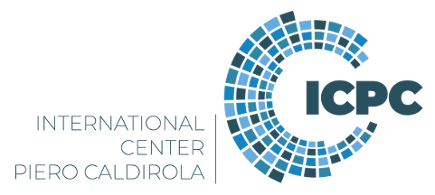Speaker
Description
Interferometry has to this day been an essential diagnostic on any medium to large scale fusion experiment, primarily due to its resilience and “simplicity”. These properties are quintessential for the diagnostic principle’s success and establish it as the primary density control diagnostic on most fusion machines so far. Polarimetry is a natural extension to the interferometer concept, which can often be added to the interferometer optics with minor additional effort. It is often used as an additional information source to correct measurement errors.
Going towards the reactor scale, these diagnostics face significant challenges, which include mirror protection, fringe jump resilience, drift mitigation and relativistic corrections. Despite the increasing challenges, IR-interferometry/polarimetry still plays an important role in the current design concept of the European DEMO. Notably, the IR-
interferometer/polarimeter is envisaged to contribute to density (profile) control, vertical position control and MHD activity detection[1].
In this work we present design considerations for the IR interferometer/polarimeter design, which have been conducted using the TRAVIS code[2]. Equilibria based on the current “orange case” scenario, which optimizes ramp-rates in separatrix power and Greenwald fraction, have been used[3, 4]. The presented simulations approximate a synthetic diagnostic and investigate effects such as refraction, relativistic errors and sensitivity during the ramp-up and flat-top phase of a DEMO discharge. The current design based on the simulation results are discussed.
This work has been carried out within the framework of the EUROfusion Consortium and has received funding from the EURATOM research and training programme 2014-2018 and 2019-2020 under grant agreement No 633053. The views and opinions expressed herein do not necessarily reflect those of the European Commission.
[1] W. Biel, R. Albanese, R. Ambrosino, M. Ariola, M. Berkel, I. Bolshakova, K. Brunner, R. Cavazzana, M. Cecconello, S. Conroy, et al., Fusion Engineering and Design 146, 465 (2019), URL https:// www.sciencedirect.com/ science/
article/ pii/ S0920379618308585.
[2] N. Marushchenko, Y. Turkin, and H. Maassberg, Computer Physics Communications 185, 165 (2014), URL http:// www.sciencedirect.com/ science/ article/ pii/ S0010465513003032.
[3] F. Palermo and E. Fable, Final report on deliverable(s) pmi-5.2.1-t052-d001 (2020), URL https:// idm.euro-fusion.org/?uid=2NJ85C .
[4] M. Mattei, R. Albanese, G. Ambrosino, R. Ambrosino, M. Ariola, L. E. di Grazia, R. Iervolino, and A. Pironti, Final report on deliverable(s) pmi-5.2.1-t036-d001 (2019), URL https:// idm.euro-fusion.org/ ?uid=2LFUHJ .

